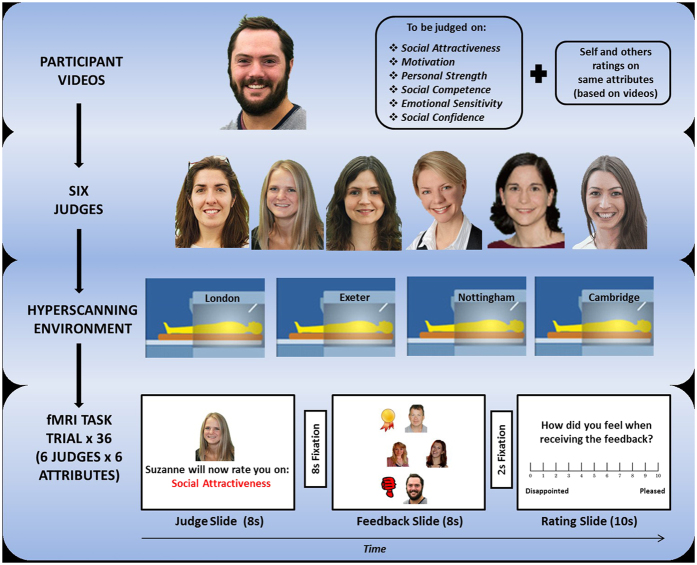Figure 1. The Social Feedback Task.
Participants (n = 56; Table S1) were first instructed to make 1-minute videos in which they talk freely about themselves and their aspirations. Participants believed their performance in these videos was being rated on six social attributes by a panel of six judges (confederates) in comparison to 3 other contestants (also confederates). Participants believed that they and the other contestants were in MRI scanners across the UK (in fact, only the participants were being scanned). They were able to view (and rate) the videos of the other contestants (confederates) prior to entering the scanner13. In the scanner, in order to provide signals of social inclusion and social exclusion, participants received feedback from each judge on each social attribute relative to the other contestants and were then asked to rate how the feedback made them feel. Feedback was either socially positive/inclusive (rated the best of the four contestants on that attribute by that judge and positioned at the top of the Feedback Slide with an adjacent gold medal), socially negative/excluding (rated the worst on that attribute and positioned at the bottom of the Slide with a thumbs-down graphic), or neutral (rated intermediate and positioned in the middle of the Slide). Participants received equal amounts of such positive, negative and neutral social feedback during the course of the task.

